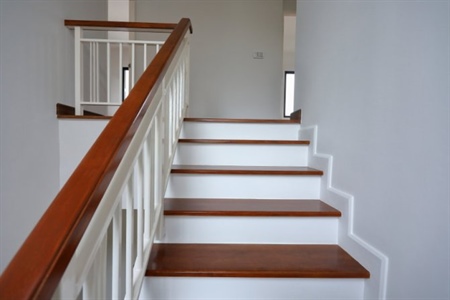Home Inspection Checklist: What’s Inspected for Stairways?

There are so many facets to a home that need a thorough inspection. From the property's foundation to its plumbing and electrical systems, every nook and cranky is evaluated to help determine what’s right and what may need fixing to ensure the buyer gets the best price. In addition, a pre-listing home inspection lets the seller make any repairs and adjustments before they put it onto the market.
Yes, many areas of your home need an inspection, including one that’s widely overlooked: stairways. Check out this stairway inspection checklist to ensure your home’s safety!
Why Are Stairs Inspected?
Simply, stairs are one of the most hazardous areas on every property. Even a tumble from halfway up a flight of stairs can be deadly. Inspecting the levels of steps and other safety features will ensure accidents on stairs will be minimal or nonexistent.
Stairway Inspection Checklist
There are multiple features for property stairway inspection, including:
Handrail
Handrails are essential for stair safety, giving you leverage and extra balance going up and down. Any set of steps with four or more risers must have a handrail on at least one side. The minimum height of the handrail should be 34 inches but must not exceed 38 inches and should reach the entire length of the stairs. Lastly, handrails should not project more than four and a half inches on either stairway side.
Stairway Width & Height
Not counting the handrail, the width of the stairway should be no less than 36 inches wide. Spiral stairways have a smaller minimum of 26 inches below the handrail. The suggested height for headroom clearance on the stairs is six to eight feet for optimal clearance.
Treads & Risers
Your risers' height dramatically impacts the safety of each step you take. The minimum height for a riser is four inches, while the maximum comes in at seven and a half. This allows the risers to progress upwards without making it too difficult for some individuals.
Stair treads are the horizontal pieces you place your foot on when traversing stairs. Treads should have a seven and a half depth at 12 inches from the narrowest edge. Winder steps should have at least a 10-inch depth.
Contact DMC Home Inspection for Stairway Evaluation
When you need your potential home inspector for stairway safety or any other facet of the property, call on DMC Home Inspections! With 150 components of thorough inspection and being InterNACHI and ASHI certified, we have the tools and the knowledge to get the job done!
Schedule an inspection today, or give us a call at 612-310-1692!